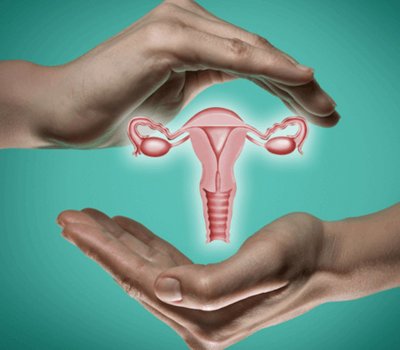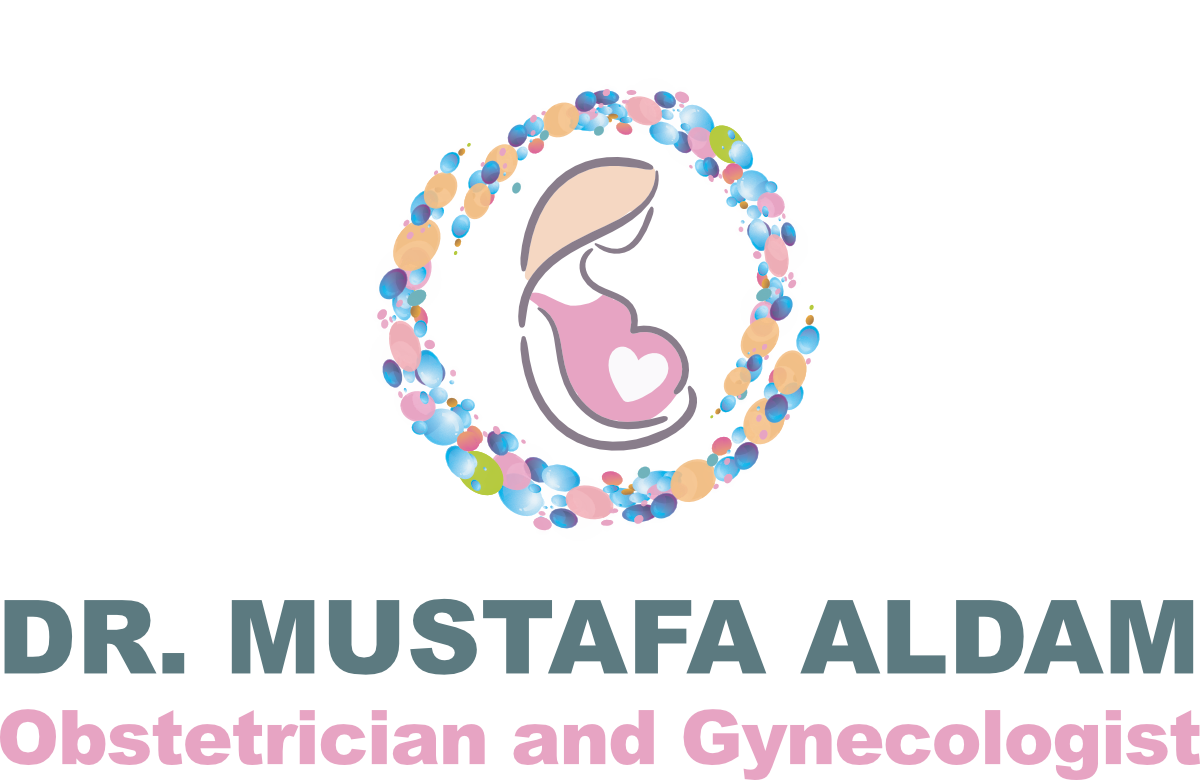hysterectomy in Dubai
(Uterus Removal Surgery)
A hysterectomy is a surgery to remove the uterus. Typically, it is recommended when you lose the ability to become pregnant, have fibroids or tumors, or do not menstruate anymore.
What is a hysterectomy?
A hysterectomy removes the uterus, with or without the cervix, fallopian tubes, and ovaries, depending on your reason for the surgery.
This surgery helps alleviate abnormal bleeding, uterine prolapse, fibroids and cancer. The recovery takes four to six weeks on average, depending on the partial or complete hysterectomy you have.
Conditions treated by Hysterectomy in Dubai
The following conditions can be treated with a vNOTES Surgery in Dubai:
- Abnormal uterine bleeding
- Chronic pelvic pain
- Fibroids
- Uterine prolapse
vNOTES Adnexal Surgery may be indicated for the following reasons:
- Adnexal mass
- Sterilization
- Prophylactic ovarian cancer prevention

Types of hysterectomy
Hysterectomy is of the following types:
- Total hysterectomy: In this, the uterus and cervix are removed completely. Total hysterectomy is further divided into:
- Total hysterectomy with bilateral salpingo-oophorectomy: In this, the uterus, cervix, fallopian tubes (salpingectomy), and ovaries (oophorectomy) are removed.
- Hysterectomy with unilateral salpingo-oophorectomy- The uterus, fallopian tube, and one ovary are removed.
- Supracervical hysterectomy: In this, the upper uterus is removed while the cervix is left.
- Radical hysterectomy with bilateral salpingo-oophorectomy: This hysterectomy is done as part of cancer treatment. In this, the uterus, cervix, fallopian tubes, ovaries, lymph nodes, surrounding tissues, and the upper portion of the vagina are removed.
Consult Dr. Mustafa Aldam if you are looking for hysterectomy in Dubai.
When is a hysterectomy in Dubai recommended?
- Severe menstrual pain
- Uncontrolled heavy vaginal bleeding
- Recurrent and too many uterine polyps or adenomyosis.
- Leiomyomas or uterine fibroids— noncancerous tumors.
- Uterine prolapse (uterus collapsed into the vaginal canal due to muscle) causing urinary incontinence.
- Uterine or cervical cancer or abnormal cancerous tissue growth in the uterus.

Methods of hysterectomy procedure
It starts with a diagnosis. Dr. Mustafa will ask about your issues and examine your pelvis before recommending a hysterectomy in Dubai. After knowing your preference for hysterectomy type, he will make a suitable plan for the procedure.
Dr. Mustafa will explain the surgery to you. He will ask you to wear an operation gown and sedate you with anesthesia before surgery to numb pain. Here are the hysterectomy procedures based on how they are performed.
Vaginal hysterectomy
The doctor makes an incision at the top of your vagina and removes the uterus through the vagina- without any external incision outside the skin. This method is commonly recommended for uterine prolapse or for removing non-malignant tumors. It has the fewest complications, and the recovery is fast in a few weeks. It is a day procedure.
Laparoscopic hysterectomy
The surgery is done with a laparoscope inserted in the lower belly through a small incision made in the belly button. The laparoscope is a thin tube with a camera to show continuous real-time images on the screen. Other surgical tools are also inserted slowly through several other small incisions. The uterus is cut and removed in multiple small pieces through abdominal incisions or vagina. Recovery is shorter and less painful than an open abdominal hysterectomy.
Robotic-assisted laparoscopic hysterectomy
It is a very advanced and latest surgical procedure, done with the help of a robotic machine. In this, the robot assists the surgeon in doing laparoscopic surgery. A laparoscope is inserted through a small incision in the abdomen and monitored. The robotic arms and instruments are diligently controlled by the surgeon to make incisions and perform the laparoscopic hysterectomy in Dubai.
Open-Abdominal hysterectomy
It is a traditional hysterectomy approach. The uterus is removed through a six- to the eight-inch-long incision in your abdomen. A T-shaped incision from the belly button to your pubic bone or across the public hairline. Once the surgery is complete, Dr. Mustafa closes the incision with dissolvable sutures. It is recommended if a tumor or cancer is involved or the uterus has swelled with a disease or fibroids. It requires a longer hospital stay and recovery time.
What to expect: Recovery and aftercare
The procedure is one to three hours long. You can expect the following:
- Vaginal dryness
- Pain and scarring
- Drains from incision
- Vaginal dryness
- Pain and scarring
- Drains from incision
- Loss of libido
- Irritation at the incision sites
- Vaginal drainage up to six weeks after surgery
The length of recovery majorly depends on the type of surgery.
Most women recover from a vaginal or laparoscopic hysterectomy in 3-4 weeks and an abdominal hysterectomy in 4-6 weeks.
Within 4-6 weeks, people should be able to resume their normal activities, such as work, driving, and exercise routines. However, before returning to strenuous exercise, such as high-intensity interval training, weightlifting, or contact sports, it is best to consult with our doctor.
Aftercare
If a woman adheres to the following guidelines, her body will heal quickly and successfully following a vaginal hysterectomy:
- Get plenty of rest – Aim for at least 8 hours of sleep per night, or more if fatigue is a problem.
- Follow a healthy diet – Eating plenty of fruits, vegetables, whole grains, and protein can aid in a healthier recovery. Nutrients in healthy foods help the body heal and increase energy levels.
- Consume high-fiber foods – Constipation is common following surgery and can be exacerbated by certain pain medications. Consider a stool softener or gentle laxative, as well as increasing your water intake if bowel movements are painful or difficult, even with a high-fiber diet.
- Avoid smoking – Smoking interferes with the body’s healing processes and makes recovery from surgery more difficult. Stopping smoking before surgery lowers the risk of anesthesia-related lung problems. Before undergoing your vNOTES surgery in Dubai, consult with our doctor about smoking cessation plans or nicotine replacements.
- Attend follow-up appointments – The doctor will suggest regular follow-up visits, which allow a person to discuss the healing process and ask any questions they may have.
Benefits of vNOTES Hysterectomy in Dubai
There are several reasons why a patient may choose vNOTES over other surgical techniques:
- Shorter hospital stay: When compared to other surgeries, patients who undergo surgery can be home in less than 24 hours in most cases.
- Lesser or no visible scars: Other surgeries, whether laparoscopic or open, leave visible scars on the abdomen. A vaginal incision eliminates visible scarring in the case of scar-free Hysterectomy in Dubai.
- Less pain: Patients report less post-operative pain after vNOTES procedures when compared to other methods of gynecologic surgery. As a result, post-operative patients require less pain medication for a shorter period of time.
- Faster recovery: Some patients were able to return to work less than a week after surgery. Other gynecologic laparoscopic surgeries necessitate a 2-4 week recovery period.
However, post-operative sexual intercourse is one factor to consider. Surgeons recommend that vaginal intercourse be avoided for 4-6 weeks following surgery.
Contact Dr Mustafa Aldam for laparoscopic hysterectomy in Dubai
Most people recover from a hysterectomy in four to six weeks. Vaginal and laparoscopic hysterectomy takes lesser recovery time than abdominal hysterectomy.
Dr. Mustafa Aldam is a well-known obstetrician with avid experience in hysterectomies. Though uterus removal surgery in Dubai is very common, the surgeon’s expertise matters the most in such surgeries.
Hence, choose judiciously. Choose Dr. Mustafa for the best laparoscopic hysterectomy in Dubai.
FAQ's
A hysterectomy is a surgical procedure that involves the removal of a woman’s uterus.
A woman may need a hysterectomy if she has a gynecological condition such as uterine fibroids, endometriosis, or uterine prolapse that is causing significant pain or bleeding and has not responded to other treatments.
The three main types of hysterectomy are total hysterectomy (removal of the uterus and cervix), subtotal hysterectomy (removal of the uterus only), and radical hysterectomy (removal of the uterus, cervix, and upper part of the vagina).
The recovery time after a hysterectomy can vary depending on the type of procedure performed and the individual’s overall health, but it generally takes around 4-6 weeks for a full recovery.
If the ovaries are removed during the hysterectomy, a woman will experience menopause, but if the ovaries are left intact, she will not go through menopause immediately.
Yes, a woman can still have sex after a hysterectomy, but she may need to wait for a period of time to allow for healing.
If the ovaries are removed during the hysterectomy, a woman’s hormone levels will be affected, and she may experience menopausal symptoms.
The risks associated with a hysterectomy include bleeding, infection, damage to nearby organs, blood clots, and anesthesia complications.
No, a woman cannot get pregnant after a hysterectomy because the uterus is removed.
A laparoscopic hysterectomy is a minimally invasive surgical procedure that involves removing the uterus through small incisions in the abdomen.
The benefits of a laparoscopic hysterectomy include smaller incisions, less scarring, shorter hospital stay, less postoperative pain, and faster recovery time.
During a laparoscopic hysterectomy, a surgeon inserts a laparoscope, which is a small, lighted tube with a camera, through a small incision in the abdomen. The surgeon then uses specialized surgical instruments to remove the uterus through one or more additional small incisions.
The duration of a laparoscopic hysterectomy varies depending on the complexity of the surgery and the surgeon’s experience, but it typically takes between 1-3 hours.
The recovery time after a laparoscopic hysterectomy is shorter than with traditional hysterectomy, with most women being able to return to normal activities within 2-3 weeks.
Some women may experience pain or discomfort after a laparoscopic hysterectomy, but it is usually less severe than with traditional hysterectomy.
The length of hospital stay after a laparoscopic hysterectomy can vary depending on individual circumstances, but generally, patients can expect to stay in the hospital for 1-2 days. In some cases, patients may be able to go home on the same day as the surgery.
It is recommended to wait at least six weeks after a laparoscopic hysterectomy before resuming sexual activity. However, it is important to discuss post-surgery sexual activity with your doctor, as every patient’s recovery is different.
In some cases, the ovaries may be removed along with the uterus during a laparoscopic hysterectomy. However, in many cases, the ovaries are left intact, which means that the patient will not go into menopause as a result of the surgery.
It is important to find a specialist who is experienced in performing laparoscopic hysterectomies. You can ask for referrals from your primary care physician or gynecologist, or you can research specialists online and read reviews from previous patients.
